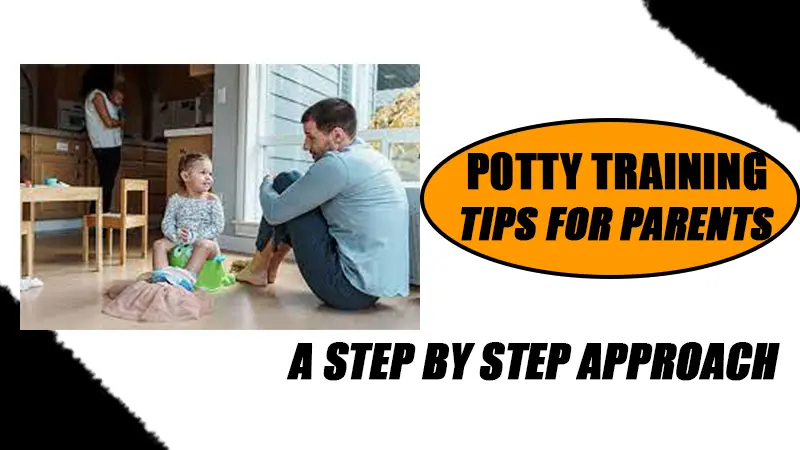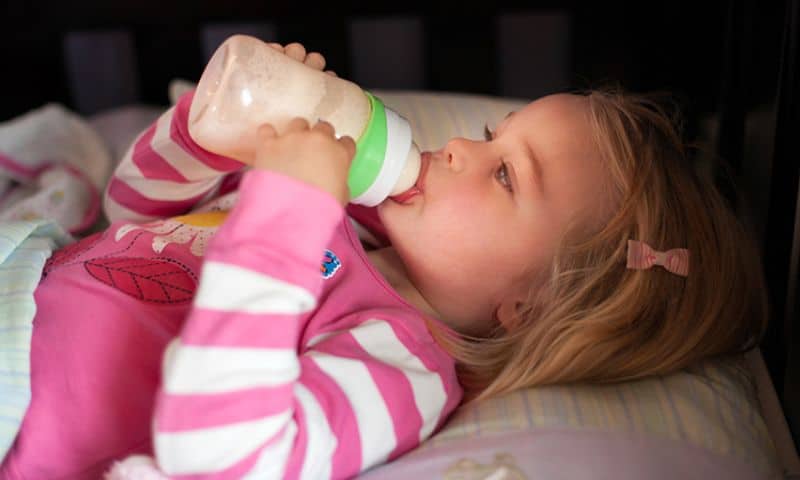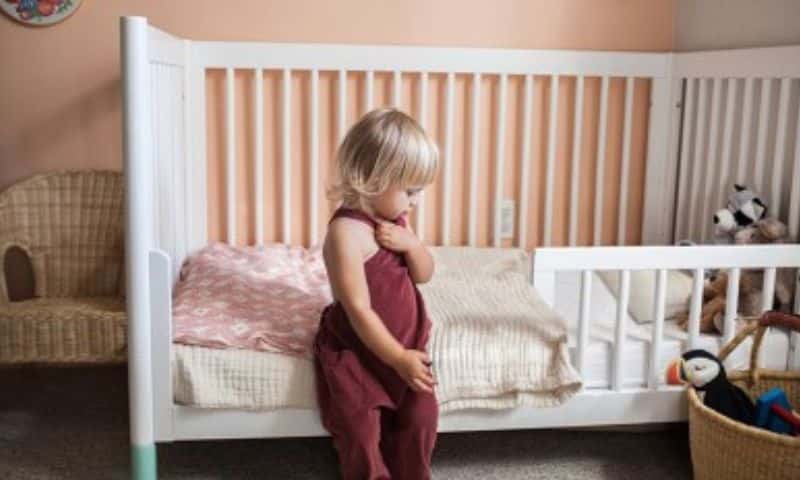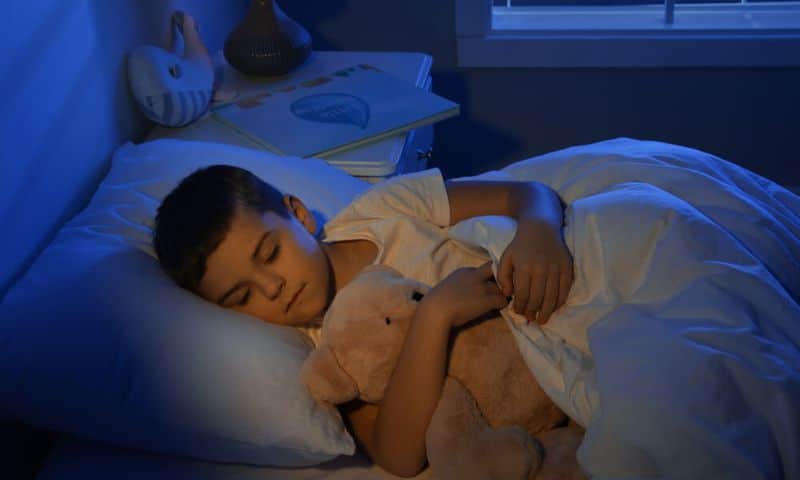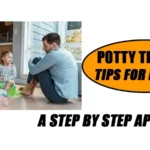Potty training is a major milestone for both children and parents. It marks the transition from diapers to using the toilet independently, allowing toddlers to gain a sense of independence and self-confidence. However, potty training can also be a challenging and frustrating process for parents, especially if they are first-time parents.
In this blog, we will provide you with a step-by-step approach to potty training your child, along with tips and tricks to make the process smoother and more successful.
Contents
- What is the Best Age to Potty Train a Toddler?
- Signs Your Child is Not Ready for Potty Training
- How Do You Start Potty Training a Toddler?
- Toddler Potty Training Schedule
- Right Toddler Potty Training Seat?
- How Long Should a Child Sit on the Potty When Potty Training?
- What is the Fastest Way to Potty Train a Toddler?
- Why is My 2 Year Old Not Potty Trained?
- What techniques to apply if your child is unable to Potty?
- Final Thoughts
What is the Best Age to Potty Train a Toddler?
Many parents wonder when is the right time to start potty training their child. While there is no specific age that suits every child, most children are ready for potty training between the ages of 2-3 years old. However, every child is different, and some may show readiness earlier or later than others. The most important thing is to look for signs of readiness in your child before starting the training process.
According to physicians, a child is ready for potty training when they start showing an interest in the bathroom habits of others, can communicate their needs effectively, and can stay dry for more extended periods. It’s essential to wait until your child is physically and emotionally ready to avoid any potential setbacks or difficulties during the training process.
Signs Your Child is Not Ready for Potty Training
It’s crucial to note that not all children are ready for potty training at the same time. If you try to force your child into potty training before they are ready, it may lead to frustration and resistance from the child. Some signs that your child may not be ready for potty training include:
- Not being able to stay dry for at least two hours.
- Showing no interest in the toilet or bathroom habits of others.
- Not being able to communicate their needs effectively.
- Becoming anxious or stressed when you bring up potty training.
If you notice any of these signs, it’s best to wait a bit longer before starting the training process. Your child will eventually show signs of readiness when they are ready to take this big step.
How Do You Start Potty Training a Toddler?
Once you have determined that your child is ready for potty training, it’s essential to create a positive and supportive environment. Here are some tips to get started:
Tips for Toilet Training
- Get the right equipment: Invest in a small potty chair or a child-sized toilet seat so that your child feels comfortable and secure while using the toilet.
- Demonstrate: Show your child how to use the potty by sitting on it yourself, or have an older sibling demonstrate.
- Create a routine: Establish a regular schedule for taking your child to the potty, such as right after meals or before naptime.
- Use positive reinforcement: Praise and reward your child when they successfully use the potty, and be patient and encouraging during accidents.
- Help with hygiene: Teach your child how to properly wipe themselves after using the toilet, and always wash their hands afterward.
- Make it fun: Use books, songs, or games to make the potty training process enjoyable and less intimidating for your child.
- Ask for their opinion: Involve your child in the process by letting them choose their potty seat or underwear. This will give them a sense of control and make them more invested in the training.
- Remove distractions: During potty time, eliminate any distractions such as toys or electronics to help your child focus on the task at hand.
Toddler Potty Training Schedule
Following a consistent schedule is essential for potty training success. Here is an example of a typical toddler potty training schedule:
Upon waking up: Take your child to the bathroom and have them sit on the potty.
After breakfast: Have your child sit on the potty for a few minutes.
Before naptime and bedtime: Take your child to the potty and have them sit for a few minutes.
After meals: Take your child to the potty and encourage them to use it.
Every 1-2 hours: Have your child sit on the potty, even if they do not express the need to go.
Right Toddler Potty Training Seat?
As a parent, one of the most challenging tasks is potty training your toddler. It can be a frustrating and messy process, but it’s an essential milestone for both you and your child. As your child transitions from diapers to using the toilet independently, it’s crucial to have the right tools in place to ensure a smooth and successful potty training journey.
One of the key tools for potty training is a toddler potty training seat. It provides a safe and comfortable place for your child to sit on while using the toilet. But with so many options available in the market, how do you choose the right one for your child?
Here are some factors to consider when selecting a toddler potty training seat:
Comfort
First and foremost, the potty training seat should be comfortable for your child to sit on. It’s essential to choose a seat with soft padding and a smooth surface to prevent any discomfort or irritation. Some seats also come with handles for added support, which can be beneficial for younger children or those who need extra assistance.
Size and Fit
It’s crucial to choose a potty training seat that fits your child’s size and shape comfortably. A seat that is too small or too big can cause discomfort and may discourage your child from using it. It’s best to look for seats with adjustable features, such as a removable cushion or adjustable straps, to ensure a proper fit.
Stability
Toddlers are known to be wiggly and restless, so it’s essential to choose a potty training seat that is stable and secure. Look for seats with non-slip grips or rubberized bases to prevent the seat from sliding while your child is using it.
Easy to Clean
Let’s face it; accidents are bound to happen during potty training. That’s why it’s crucial to choose a potty training seat that is easy to clean and maintain. Look for seats with removable parts or ones that can be easily wiped down with a disinfectant. It’s also helpful to choose a seat with minimal crevices to prevent any buildup of bacteria.
Design
While the functionality of the potty training seat should be your top priority, it doesn’t hurt to consider the design as well. Some seats come in fun and colorful designs, which can be appealing to your child and make potty training more enjoyable. You can also opt for a seat that doubles as a step stool for when your child is ready to use the regular toilet.
Potty Training Readiness
It’s essential to consider your child’s readiness before introducing a potty training seat. Every child develops at their own pace, so it’s crucial to wait until your child shows signs of readiness before starting the potty training process. Some signs to look out for include staying dry for more extended periods, expressing interest in using the toilet, and being able to follow simple instructions.
How Long Should a Child Sit on the Potty When Potty Training?
During potty training, it’s essential to encourage your child to sit on the potty for a few minutes at a time. However, the length of time may vary from child to child and can depend on their age and readiness. Here are some general guidelines for how long a child should sit on the potty when potty training:
- Toddlers: For younger children, it’s recommended to have them sit on the potty for 3-5 minutes at a time, multiple times a day.
- Preschoolers: As children get older and their bladder capacity increases, they can sit on the potty for longer periods. It’s advisable to have preschoolers sit on the potty for 5-10 minutes at a time.
- Reminders: If your child is showing signs of needing to use the potty, but they are resistant to sitting on it, it’s okay to give gentle reminders and encourage them to sit for a few minutes before trying again later. It’s important not to force or pressure your child as this may cause anxiety and setbacks in the training process.
Potty training can be a challenging time for both parents and children, but with patience, consistency, and the right tools, it can be a successful and rewarding experience. Remember to make it a positive and fun process for your child, and celebrate their progress along the way.
What is the Fastest Way to Potty Train a Toddler?
Potty training can be a lengthy and frustrating process, but there are several tips and tricks that can help speed up the process. First and foremost, it’s essential to wait until your child shows signs of readiness before starting potty training. Trying to force a child who is not ready can lead to resistance and delays in the process.
Secondly, consistency is key. Set a regular potty schedule and stick to it, even if your child does not express the need to go. This will help establish a routine and reinforce the habit of using the toilet.
Another helpful tip is to involve your child in the process. Let them pick out their own potty training seat or underwear, read books about potty training, and use positive reinforcement when they are successful.
Lastly, be patient and understanding. Accidents will happen, but it’s crucial to remain calm and supportive. Potty training takes time and each child progresses at their own pace. With consistency, patience, and a little bit of fun, your child will be successfully potty trained in no time!
Why is My 2 Year Old Not Potty Trained?
As mentioned earlier, every child develops at their own pace, and there is no set age for when a child should be potty trained. Some children may show interest and readiness at an early age, while others may take longer to grasp the concept. Here are some reasons why your 2-year-old may not be potty trained yet:
- Not ready: Your child may not be developmentally ready to start potty training. It’s essential to wait until they show signs of readiness before beginning the process.
- Fear or anxiety: Potty training can be a scary and unfamiliar concept for young children. Your child may feel anxious or afraid of using the toilet, which can hinder their progress.
- Physical limitations: Some children may have physical limitations, such as difficulty holding their bladder or bowel movements, that can make potty training more challenging.
- Inconsistency: If your child is being exposed to conflicting methods of potty training, it can cause confusion and setbacks in the process. It’s essential to establish a consistent approach for successful potty training.
If you have concerns about your child’s progress in potty training, it’s always best to consult with their pediatrician for guidance and support. Remember to be patient and understanding as your child navigates this new stage in their development. With the right approach and encouragement, they will eventually become potty trained at their own pace. So, don’t worry if your 2-year-old is not yet potty trained; every child is unique and will reach this milestone in their own time.
What techniques to apply if your child is unable to Potty?
If your child is having difficulty using the potty, it’s essential to remain patient and try different techniques to find what works best for them. Here are some tips to help your child with potty training:
- Use positive reinforcement
- Try different potty seats or methods (such as standing versus sitting)
- Establish a consistent routine and schedule
- Encourage your child to use the toilet before and after meals, naps, and bedtime
- Use visual aids, such as a sticker chart, to track progress and motivate your child
It’s also crucial to communicate with your child and understand if there are any underlying reasons for their difficulty with potty training. They may have fears or anxieties that are hindering their progress, and it’s essential to address those concerns and provide reassurance.
Final Thoughts
Potty training is a significant milestone in your child’s development, and it’s important to approach it with patience, consistency, and positivity. Every child is unique, so there is no one-size-fits-all approach to potty training. As parents, we must be understanding and supportive of our children as they navigate this new stage in their lives. With the right techniques from our kidsspot and a positive attitude, your child will be successfully potty trained in no time.
Remember to celebrate their progress and be patient with setbacks; eventually, they will master this skill and move on to the next stage of their development.

